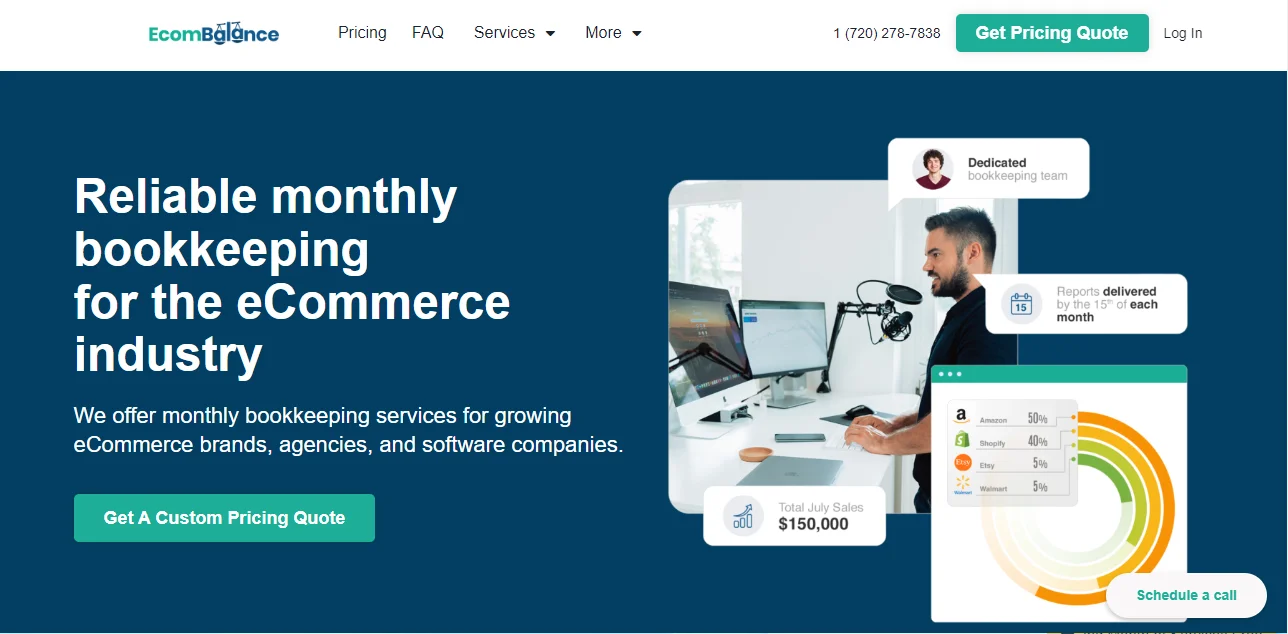
We’ve all done it. You go to an online store, fill your cart with a bunch of stuff you don’t need, and then close the tab at the last second.
Did you know that more than two-thirds of shopping carts get abandoned before completing checkout? That’s a huge amount of money you’ll never see if you own an eCommerce business. And nobody really knows why it happens. Maybe the shipping’s too high, maybe the buyer isn’t totally sure about the quality of the product, maybe the site looks too sketchy and they don’t want to give their credit card details, maybe this, maybe that…
Who knows?
If you want to reduce cart abandonment (and of course you do), you need to do something about this. Carts are usually abandoned not because people don’t want the product, but because something at the checkout didn’t give them enough of a push to click ‘BUY NOW’.
Videos are a promising solution because, instead of having blocks of text/static images, online stores are using short AI videos explaining the product or using user reviews to quickly showcase the product!
The Impact of AI Videos on the Checkout Experience
When you generate videos with ChatGPT, you get a chance to transform a static checkout page into something more interactive and reassuring for your customers. Look at most checkout pages; they’re a little more than a form with lines of text, which can feel cold and even unhelpful at the worst moment, which is when a buyer is deciding whether to follow through with their purchase.
Short, targeted videos can offer clarity in an instant and break through that friction. That can be done through a quick explainer that shows how a product works or through a testimonial that proves other people who bought the same thing had a good experience with it.
His kind of content works on two levels: it offers emotional reassurance because it shows real people vouching for the brand, and it also rationally persuades them because it answers any last-minute questions they might have, which that text alone can’t address.
Psychology can back this up with principles like social proof and cognitive ease.
There’s proof that people are more likely to buy something when they see evidence they can relate to and when information is easy to process.
At checkout, an AI video can deliver both in mere seconds.
Types of Video Content That Can Influence Buyers
You can’t slap any video at checkout and expect it to work to your advantage.
There are two particular formats that are most effective when a buyer is seconds away from deciding whether to go ahead and buy or click out of the tab.

Explainer Videos
Explainer videos give buyers quick information about what they’re buying.
Let’s say someone is about to subscribe to a software service, and they get to checkout, where they see a 30-second video walking them through how simple it is to set up an account and start.
The same goes for electronics or other complicated systems when people worry they’ll be too complex to use.
Testimonial Videos
Testimonials make the buying experience less about text and numbers because they bring a human element into it.
A customer telling their story in a video feels way more personal than a block of text that says ‘5 stars, great product’.
And with AI avatars, you can deliver the same effect at scale and give your business a way to simulate the warmth and relatability of real people speaking on camera without spending money on actors and film crews.
Compared to static text you get with reviews, testimonial videos add tone and expression that help customers feel more connected.
Hybrid Formats
Sometimes the best approach is to combine the strengths of explainers and testimonials.
Think of a short video where a ‘customer’ explains how they use a product in their daily life while also showing how it works. This hybrid format tells people how the product performs and includes authentic storytelling.
Thanks to AI video tools, it’s easy to create this kind of mixed content over and over, which means you can adapt your message for different products and audiences.
What AI Videos Do for Conversion Metrics
AI videos can make a real difference when it comes to numbers.
A short video that’s placed right at the checkout can be that little final push a buyer needs to finish the purchase. Videos build confidence and, when a buyer trusts you, they’re more likely to finish the order.
Testimonials act as social proof.
When (potential) buyers see others who’ve had a good experience, they feel safer (and more encouraged) to convert.
Imagine if a clothing store had a quick sizing video before checkout, or if a tech shop could show how simple it is to start using that new gadget.
It could be the difference between more revenue and abandoned carts.
What to Consider When Implementing AI Videos
Before you rush to add AI videos everywhere, take a second and think about the execution because that’s just as important as the idea itself.
If you don’t do this well, it will backfire because buyers will notice the videos feel robotic and insincere. So, although you were trying to build trust, you’ll actually hurt it.
If you overload the page with too many clips, you’ll slow it down, which is the last thing you want when someone is deciding whether to pay or not.
But even if the video is well-made, it can still be less than ideal if the AI avatar looks unnatural or too generic.
You want to keep things simple but polished: do short clips that last between 15 and 30 seconds (attention spans aren’t what they used to be), test where the video sits on the page so it’s not distracting, and always include subtitles. If you don’t, you risk the message being unclear for some people.
You should also be upfront with the content that was generated by AI because transparency is very important for trust.
- 15-30 seconds
- Choose placement carefully (do testing)
- Quality and polish above all else
- Site speed must be a priority (don’t overload)
- Subtitles!
- Transparency
How to Add an AI Video to Checkout
The process sounds pretty simple, but it takes some strategy to make it work.
Your goal isn’t to dump the video wherever, but to place the right message in the right format exactly where the shopper might hesitate to complete the order.
Here’s a step-by-step on how to do this.

The Video’s Goal
What is this video supposed to achieve? What’s the result you’re hoping for? Do you want to reduce the doubts about the product or explain something complicated that the text can’t quite cover?
The style of the message changes depending on the goal, so you need to be clear about what you want.
Without clarity on this matter, you’ll end up with content that’s out of place and doesn’t actually help the buyer move forward.
Short and Relevant
The checkout page is the last place for a deep dive, and nobody will ever watch a 5-minute video if they’re about to complete their order. Your video should be between 30 and 60 seconds long. That’s long enough to address the concern but short enough to keep the attention focused on completing the purchase.
If the video drags or the information in it is irrelevant, it will distract the customer from the sale instead of closing it.
Placement/Testing
Where you put the video is just as important as what it says. Test different spots with A/B experiments to see if the buyers respond better to a clip above the form, next to the payment button, or in a sidebar – things like that – and stick to the option that converts the best.
Track Performance
Never forget to track the numbers.
The whole sales process, from start to finish, is paved with various metrics, and these help you see which of the methods are best. This way, not only are you getting the most out of the current campaign, but you’re also creating a better foundation for future campaigns.
If the video doesn’t really do anything, you should adjust it and see how the change has affected the numbers.
The Future of AI Video in eCommerce Checkout Optimization
The future of AI video in eCommerce checkout is going toward experiences that feel almost personalized for each customer.
Avatars are becoming more and more natural, and their voices are getting more lifelike and their movements are becoming more human – it’s really difficult to distinguish real from digital.
Soon, there won’t be just generic explainers and testimonials but videos that are personalized in real time that pull information from customer data.
For instance, a customer in France would be able to see a short video in French that explains how easy it is to ship packages to their region. A returning customer could be greeted with a quick thank-you clip that references the last order they made.
Or you could also have an AI customer service agent who’ll answer all unique questions customers might have, all answered in their native language.
This technology is expected to tie more closely into CRM systems and eCommerce platforms, which means there will be even more chances for customization.
What Is EcomBalance?

EcomBalance is a monthly bookkeeping service specialized for eCommerce companies selling on Amazon, Shopify, eBay, Etsy, WooCommerce, & other eCommerce channels.
We take monthly bookkeeping off your plate and deliver you your financial statements by the 15th or 20th of each month.
You’ll have your Profit and Loss Statement, Balance Sheet, and Cash Flow Statement ready for analysis each month so you and your business partners can make better business decisions.
Interested in learning more? Schedule a call with our CEO, Nathan Hirsch.
And here’s some free resources:
- Monthly Finance Meeting Agenda
- 9 Steps to Master Your Ecommerce Bookkeeping Checklist
- The Ultimate Guide on Finding an Ecommerce Virtual Bookkeeping Service
- What Is a Profit and Loss Statement?
- How to Read & Interpret a Cash Flow Statement
- How to Read a Balance Sheet & Truly Understand It
Conclusion
There’s no way to make cart abandonment completely disappear because there are all kinds of things that can mess with the checkout. But most carts that get abandoned aren’t about a drop in the Wi-Fi or an unexpected ring at the door, but about doubt.
That one tiny little moment where the customer hesitates is where you lose most of your purchases, and it’s also where AI videos can help you turn things around.




